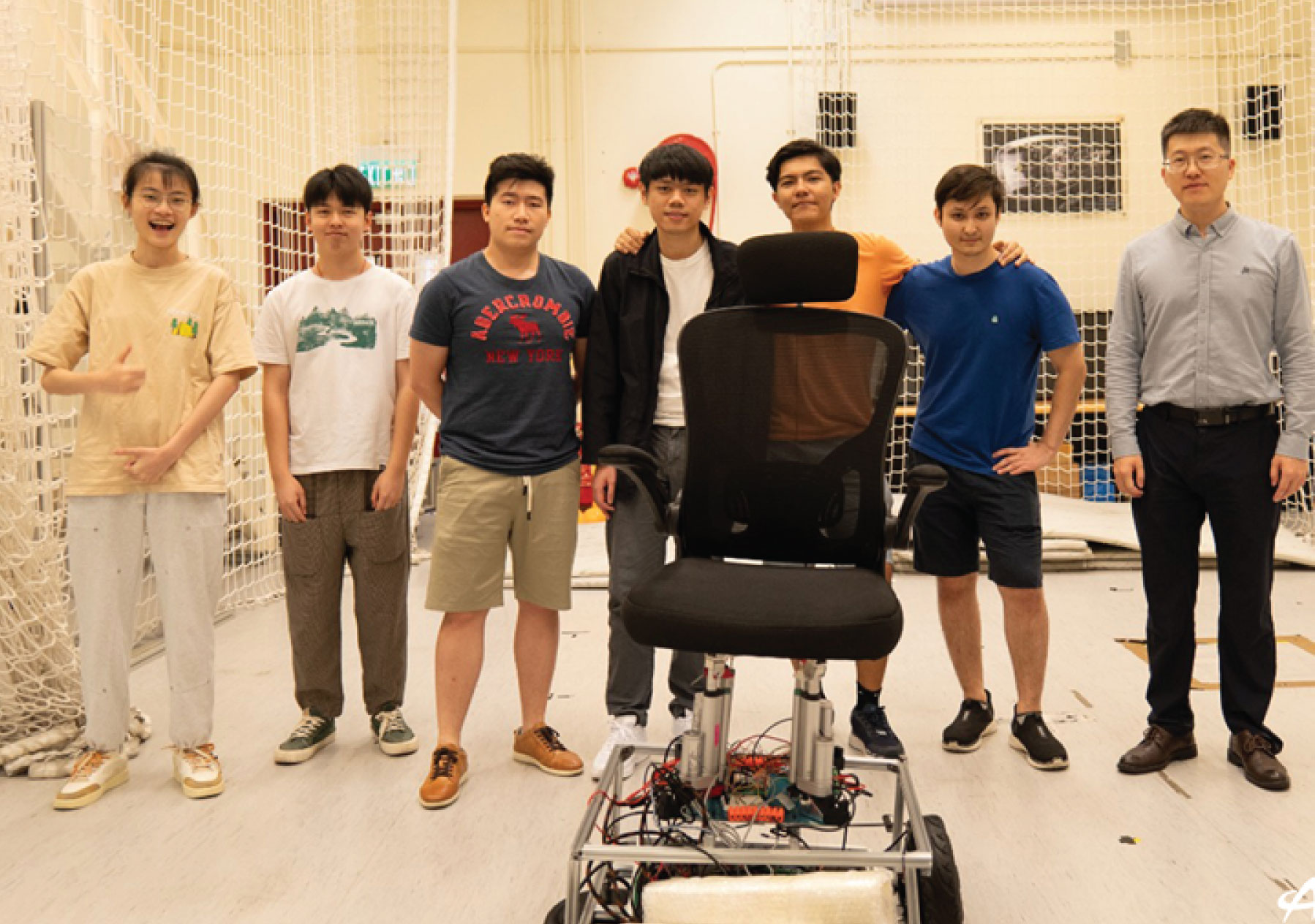The ASMPT Technology Award, organized by ASMPT, serves as a prestigious platform for engineering students to showcase their research achievements and foster innovation in Hong Kong. A team of six engineering students—CHENG Yuling, LAI Hoi Kit, ISSAMETOV Altair, MAN Chak Tao, MYRGYYASSOV Alisher, and SO King Fung—represented PolyU, the team was honored to compete with some of the brightest students, challenging their understanding of developing effective solutions.
This experience helped them recognize their shortcomings, motivating personal growth. The intelligent wheelchair project, inspired by the needs of an aging society, received an Outstanding Award for its innovative design. This recognition fueled their passion for creating solutions that improve lives and provided invaluable insights for future endeavors.

Ms.CHENG Yuling
Mr. LAI Hoi Kit
Mr. ISSAMETOV Altair
Mr. MAN Chak Tao
Mr. MYRGYYASSOV Alisher
Mr. SO King Fung
Department of Aeronautical and Aviation Engineering
Department of Electrical and Electronic Engineering
Faculty of Engineering
This involves the use of sensors and algorithms to enable devices, like intelligent wheelchairs, to navigate autonomously. It requires knowledge of robotics, sensor integration, and pathfinding algorithms to ensure the wheelchair can move safely and efficiently to a specified destination without human intervention.
SLAM is a method used in robotics and autonomous vehicles to build a map of an unknown environment while simultaneously keeping track of the device's location within it. This requires expertise in data processing, sensor fusion, and algorithm development to accurately map environments and localize the device in real-time.
This domain focuses on creating intuitive interfaces that allow users to interact with machines effectively. In the context of the intelligent wheelchair, it includes developing control systems based on EEG data and eye movement, which requires understanding user experience design, signal processing, and interface programming.
This involves designing physical components of devices to ensure they are functional and comfortable for users. For the wheelchair project, it includes designing a self-balancing seat and adjustable neck and hand rests, which requires knowledge of mechanical engineering principles, material science, and ergonomic design.
This area focuses on integrating health-tracking features into devices, such as monitoring heart rate and detecting falls. It involves understanding biomedical engineering, sensor technology, and data analysis to develop reliable systems that can enhance user safety and health monitoring capabilities.
Engaging in the ASMPT Technology Award allowed participants to recognize their own shortcomings and areas for improvement. This self-awareness is crucial for lifelong learning, as it motivates individuals to continuously seek personal and professional development.
The competition sparked curiosity and interest in the work of other participants. Lifelong learners maintain an open mind and a desire to explore new ideas and perspectives, which can lead to innovative solutions and a deeper understanding of various fields.
The project required adapting to challenges and finding effective solutions, such as integrating different technologies and overcoming technical obstacles. Lifelong learners develop resilience and adaptability, enabling them to tackle complex problems and thrive in changing environments.
Working with a diverse team highlighted the importance of communication and collaboration. Lifelong learners value teamwork and the ability to communicate effectively with people from different backgrounds, which enhances their ability to work in diverse settings and achieve common goals.
The experience involved learning new technologies and skills, such as programming in Python and understanding SLAM methods. Lifelong learners are committed to continuously updating their skills and knowledge to stay relevant and effective in their fields, embracing new learning opportunities as they arise.
The pursuit of knowledge is a lifelong journey! To further expand your knowledge and continue your personal and professional growth. Click and explore the following learning resources:
Automated Navigation Technology
Simultaneous Localization and Mapping
Human-Machine Interface Design
Mechanical Design and Ergonomics